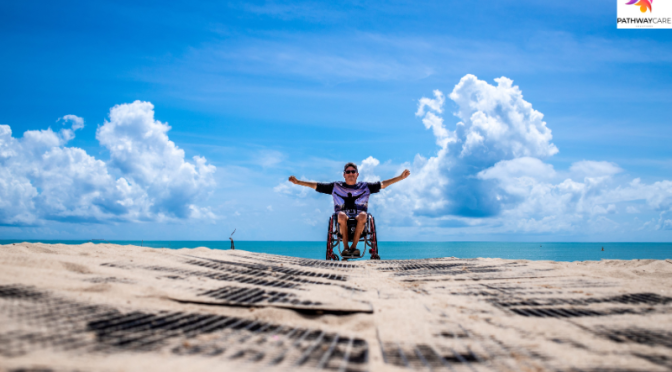For many disabled individuals, navigating public spaces can present a variety of challenges. Despite improvements in accessibility, many places still lack the necessary features that make them truly inclusive. Whether it’s inaccessible buildings, poor transportation options, or lack of awareness, these barriers limit opportunities for social inclusion, work, and daily activities. As a result, disabled individuals often face frustration and isolation when attempting to participate in the world around them. However, with the right strategies and support systems in place, these challenges can be addressed and even overcome.
1. Understanding Common Accessibility Barriers
One of the first steps in overcoming accessibility challenges is understanding the specific barriers disabled individuals face. Some of the most common issues include lack of wheelchair ramps, inaccessible public transportation, narrow doorways, and poor signage. Many buildings, even modern ones, do not adhere to universal design principles, which makes it difficult for people with mobility impairments to enter. Even where ramps are present, they may not meet proper standards. This leaves many individuals feeling excluded from public spaces they should have full access to. The lack of accessible transportation options further compounds the issue, making it difficult to travel to and from public venues.
These challenges are not limited to physical access. Cognitive disabilities also pose a problem when public spaces lack clear signage or accommodations such as sensory-friendly areas. People with visual or hearing impairments may struggle to navigate environments not designed with their needs in mind.
2. Advocating for Improved Accessibility
Advocacy is crucial in pushing for better accessibility in public spaces. Disabled individuals, along with their allies, play an important role in raising awareness about the need for accessible environments. Advocacy can take many forms, from engaging with local government to joining disability rights organizations. When people come together to demand better access, changes are more likely to happen. Public spaces are starting to see improvements thanks to such efforts, but more work remains. Simple actions like contacting a business about their lack of accessibility can lead to real improvements. It helps when individuals share their experiences and suggest practical solutions.
In addition to personal advocacy, an NDIS provider in Central Coast or NDIS providerin Newcastle can offer guidance and resources for approaching local councils or businesses about making their spaces more accessible.
3. Using Accessible Transportation Options
Transportation is a major factor in determining how easily disabled individuals can access public spaces. Unfortunately, many public transportation systems do not provide adequate accommodations. Buses may lack wheelchair ramps, and train stations might have insufficient lifts or elevators. Taxis and rideshare services also tend to overlook accessibility needs. These challenges can make daily commuting a stressful experience for many disabled individuals.
However, some cities are beginning to improve their transport infrastructure. Wheelchair-accessible buses, designated spaces on trains, and accessible taxis are becoming more common. It’s important for individuals to research local transport options and plan trips in advance. Working with an NDIS provider in Sydney or NDIS provider in Wollongong can also help in identifying accessible routes or alternative transport options, such as specialized community transport services.
4. Planning and Preparing for Accessible Outings
When public spaces fall short of accessibility standards, preparation is key. Before visiting any location, it’s advisable to research its accessibility features. Many venues now list these details on their websites, making it easier for individuals to plan ahead. If this information is not readily available, calling the location in advance can help confirm whether it meets necessary requirements. Being prepared helps avoid unnecessary frustration and ensures a more enjoyable experience.
In addition to this, using accessible apps and tools can make outings smoother. There are several apps designed to highlight accessible venues, public transport options, and restrooms in various cities. These digital tools offer real-time information that can be extremely helpful when navigating unfamiliar areas.
5. Leveraging Technology for Better Access
Technology continues to play an essential role in improving accessibility. Smart devices, apps, and adaptive technology have opened new doors for disabled individuals. For example, navigation apps with voice guidance help visually impaired individuals move through public spaces. Wheelchair users can benefit from apps that pinpoint accessible routes or buildings. These technological advances reduce the stress of navigating inaccessible environments.
Additionally, assistive technologies such as voice-activated devices and mobility aids make it easier to interact with public spaces. NDIS provider in Central Coast services offer access to the latest assistive technologies, helping disabled individuals live more independently and confidently.
6. Working with NDIS Providers for Support
For many disabled individuals, navigating public spaces alone can be overwhelming. Working with a trusted NDIS provider in Sydney can offer valuable support. These providers can assist with mobility training, help find accessible venues, and even offer financial support for equipment like mobility aids or adaptive technology. An NDIS provider can also help with personalized care plans that make daily activities easier to manage.
Through personalized assistance and advocacy, NDIS providers ensure that individuals have the tools and resources needed to overcome barriers in public spaces. With their guidance, disabled individuals can more confidently navigate environments that may otherwise feel inaccessible.
7. Creating a More Accessible Future
While progress has been made in improving accessibility, there is still a long way to go. It’s crucial for society to continue pushing for inclusivity, ensuring that public spaces are designed for everyone. With the support of NDIS provider in Newcastle, disabled individuals can play an active role in advocating for better access. By working together, disabled communities and their allies can help create a future where public spaces are open and accessible to all, regardless of physical or cognitive abilities.
In conclusion, while navigating accessibility barriers can be challenging, it is not impossible. With advocacy, proper planning, technology, and support from NDIS providers, disabled individuals can overcome these obstacles and access the world around them more fully.



